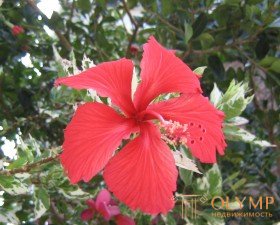
Hibiscus.
As an indoor bonsai, its variety is grown — Cooper's hibiscus (with narrow leaves with a white border and carmine-red spots); r. rassechennolopestnoy (with drooping tubular flowers with incised petals). Light mode: constantly lit south or west side. Soil - a mixture of 2: 3 parts of clay, 5 parts of humus and 2 parts of gravel; Formation. The desired shape is given to a 2-year-old plant by pruning. Strong flowering shoots do not prune! In the spring with the help of the wire the shoots of the plant are directed upwards. During the period of growth, young shoots are useful to prune to the stiff part of the plant.

Garnet.
To create a bonsai, the Nana variety is recommended with a knobby trunk, small leaves and light red flowers. Light mode: constantly lit south or west side. Temperature condition: in winter from 5-8 C. Water mode: watering is regular from spring to July, limited in autumn and rare in winter (after dropping leaves). Soil - a mixture of 1: 2 parts of clay, humus and fine-grained gravel or stone powder (in extreme cases, coarse sand). Transplant: every 2-3 years. Nutritional regime: feeding from April to July. Reproduction: seeds or cuttings (early summer). Formation: The first 2-3 years pomegranate grows without formation. To bloom pomegranate, young shoots are not cut in early spring, but only after flowering.
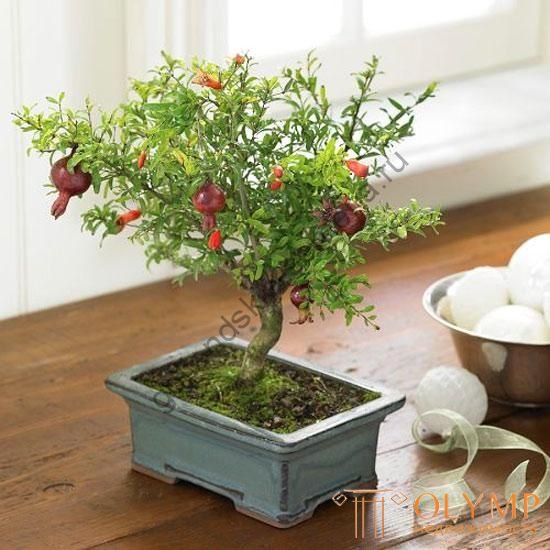
A tree of a thousand stars.
This is an evergreen plant with small leaves and small white flowers, originally from Southeast Asia. The roots of the incision spread an unpleasant smell (the second part of the Latin name translates as "foul-smelling"). Light mode: west, east and north sides. In the summer needs protection from direct sunlight. Temperature regime: the optimum temperature of the content is 12-20 C. Water mode: watering is plentiful in summer and regular in winter. The soil must always be wet. The lack of moisture (as well as a change of location) leads to the fall of the leaves. The soil is a mixture of 2: 3 parts of clay, 5 parts of humus and 2 parts of gravel. Transplant: in the spring of every 2 years. Nutritional mode: feeding from March to October. Reproduction: cuttings (early summer). Formation. Young plant is not formed. If it starts to bend, it is recommended to tie it to the pole. 2-3-year-old plant is thinned and pruned to give the desired shape. The tree easily takes any form. It is recommended to use wire.
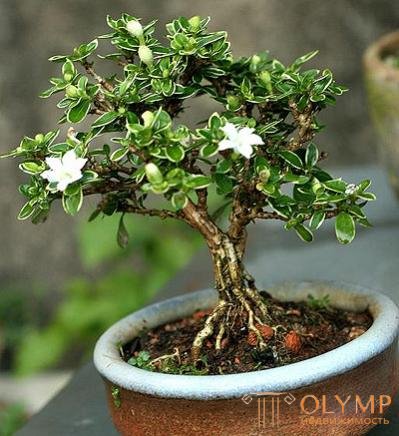
Casuarin.
A plant with a horse-shaped shoot, originally from Australia. Light mode: permanently lit west or south side. Temperature condition: in the winter - 7-10 C. Water mode: plentiful watering. Soil: - a mixture of 1: 2 parts of clay, humus and fine-grained gravel or stone powder (in extreme cases, coarse sand); Transplant: every year in spring. Nutritional mode: feeding from April to September. Reproduction: seeds and cuttings (summer). Formation. Young and overgrown shoots are pruned. To give the plant the desired shape using wire. The plant easily and quickly forms a thick trunk.
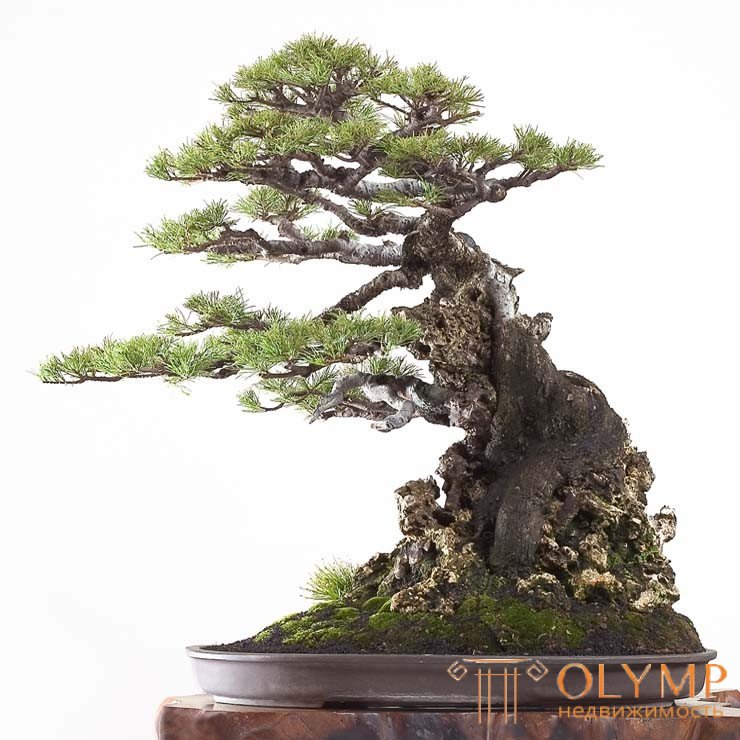
Callistemon
As bonsai potted grow 2 varieties, the first with needle-shaped leaves, the second looks like a weeping willow. Light mode: a place constantly lit by the sun. Water regime: watering - abundant during the growing season and moderate in winter. Soil: a mixture of 1 - 2 parts of clay, humus and fine-grained gravel or stone powder (in extreme cases, coarse sand). Formation. In the spring, cut the crown and remove weak shoots. Formation of bonsai is recommended to be pruned in the autumn.
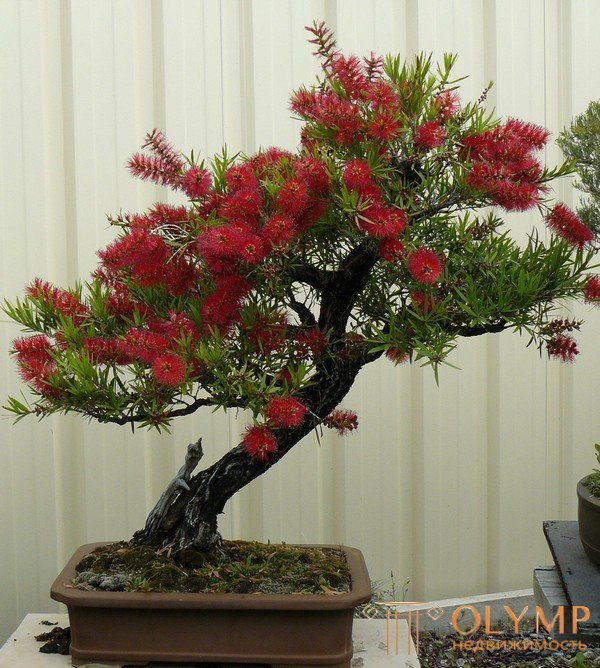
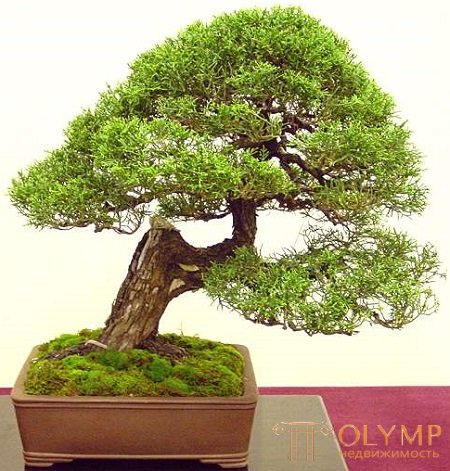
Farlands.
Evergreen shrub with large flowers of white, pink and purple hue. Flowers open just for 1 day. Light mode: constantly lit south or west side. Temperature regime: in winter - 5-15 C. Water mode: watering is regular, although the plant tolerates drought well. Soil: a mixture of 1 - 2 parts of clay, humus and fine-grained gravel or stone powder (in extreme cases, coarse sand). Transplant: for young plants - annually, for old plants - every 2 years. Nutritional regime: feeding from April to August. Loves calcium. Reproduction: cuttings (summer) and seeds (spring). Formation. The plant is easy to form. To turn a shrub into a tree, the top of a young plant is cut at the right height. Spring thinned branches that stimulate flowering.
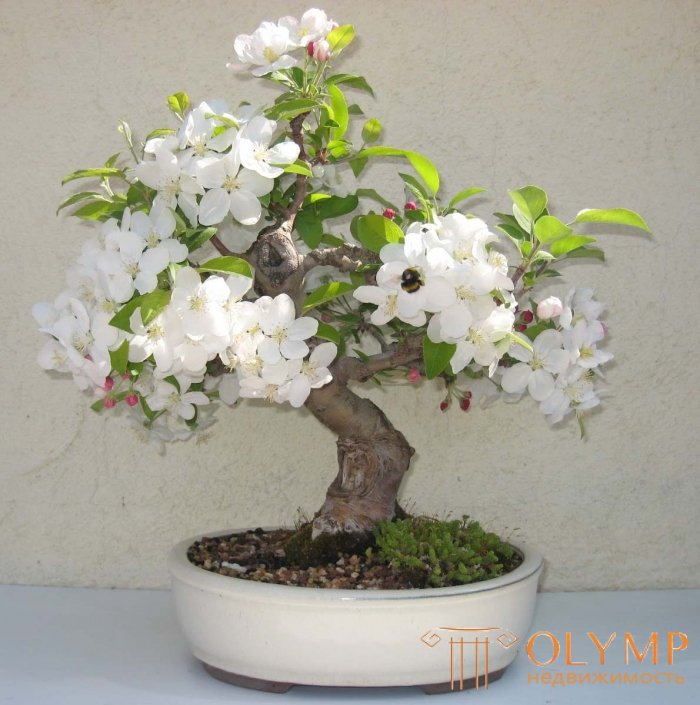
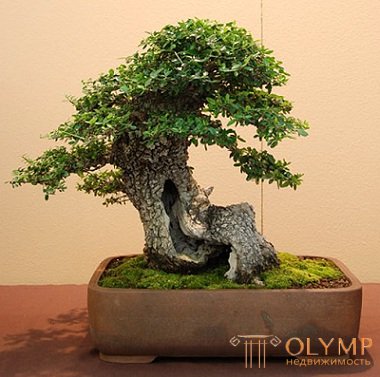
Myrtle.
As bonsai use common indoor myrtle plant. Light mode: direct sunlight interferes with the formation of the plant root system. Water regime: watering in the summer - plentiful, in the winter - depending on the location. Excessive soil moisture should be avoided! Soil: a mixture of 2 - 3 parts of clay, 5 parts of humus and 2 parts of gravel. Transplant: every 2-3 years. Nutritional regimen: with an excess of calcium, the roots will not acquire the required thickness. Reproduction: lignified cuttings (summer). Formation. Formation of bonsai produced using wire and trimming. Older branches break easily, so changing the shape using wire can only be achieved at an early stage of plant development. In order for the plant to bloom, shoots are cut not in spring, but after flowering.
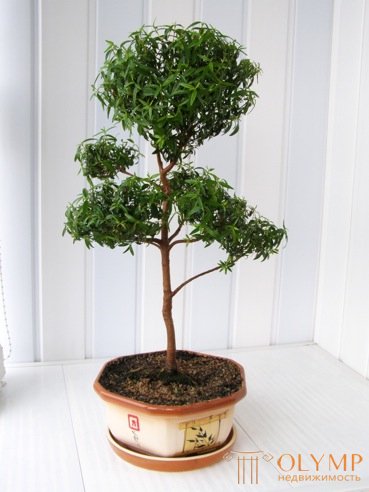
Spurge.
Light mode: constantly lit south or west side. Temperature condition: in winter - 8-16 C. Water mode: moderate watering. After a long drought, the plant sheds foliage. In this case, you must wait until the euphorbia does not give new escape, and then resume watering. Soil: a mixture of 1 - 2 parts of clay, humus and fine-grained gravel or stone powder (in extreme cases, coarse sand). Transplant: in the spring of every 1-2 years. Nutritional mode: feeding from April to September. Reproduction: leaf cuttings (summer). Formation. The plant takes an interesting natural shape. Extra shoots are pruned, too long shoots are shortened. At the place of the cut, the juice protrudes, which must be removed with a handkerchief, after which the cut should be washed with warm water.
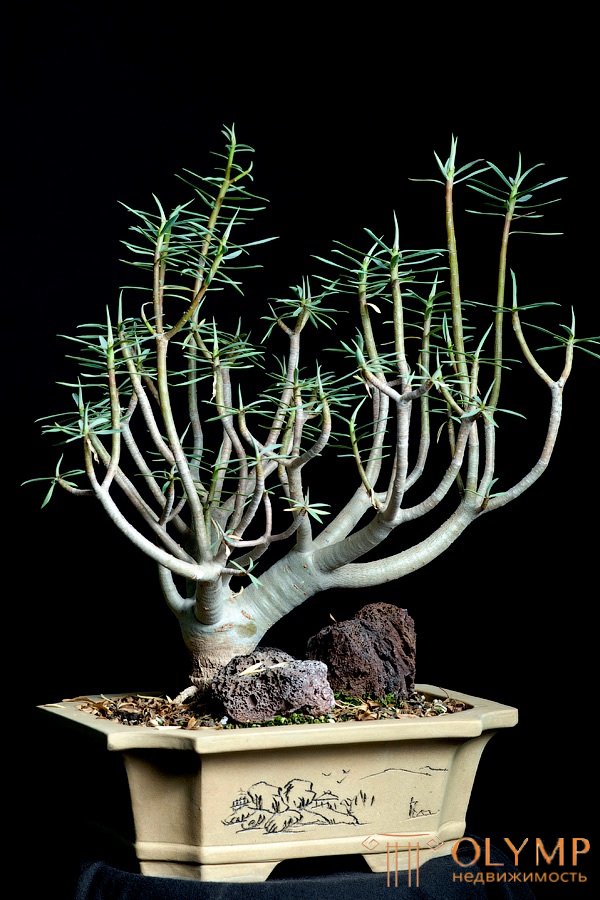
Pelargonium.
Recommended species for bonsai: zonal, ivy, fragrant, curly and strong. Most suitable for bonsai evergreen varieties. In the summer it is recommended to take out plants to fresh air. Soil: 1 part of clay, 2 parts of humus and 2 parts of fine-grained gravel or stone powder. Formation. The young plant is grown to the desired height and pruned. The upper side shoots bend with wire, the lower shoots thinned or cut.
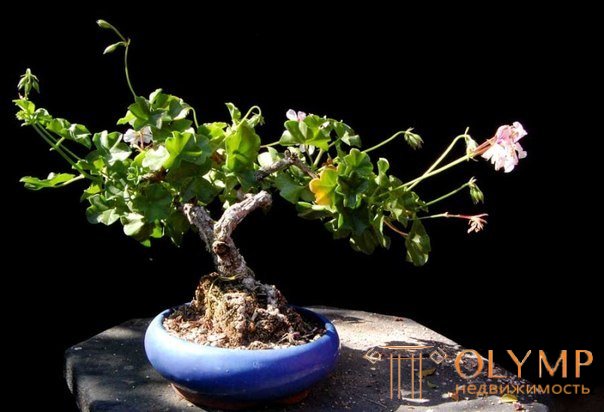
Rosemary.
Light mode: prefers a sunny place. Temperature condition: in the winter-5-15 C. Water mode: abundant watering. With a lack of moisture, the lower leaves turn yellow. Soil: a mixture of 1 - 2 parts of clay, humus and fine-grained gravel or stone powder (in extreme cases, coarse sand). Transplant: every 2 years (with a thick root system - annually). Nutritional mode: feeding from March to September. Loves calcium. Reproduction: cuttings (summer). Formation. From the shrub can easily make a tree with a dense crown.
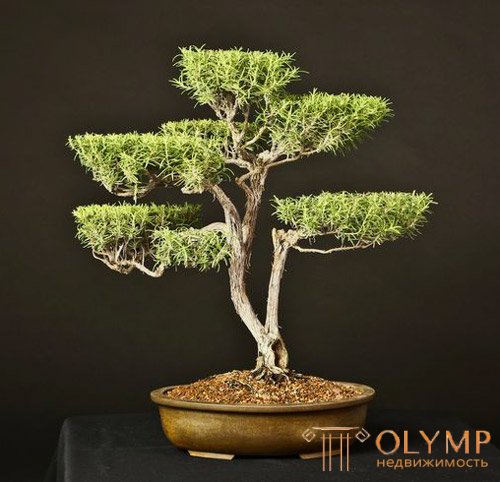
Boxwood
Recommended species for bonsai: evergreen and small-leaved. Soil: a mixture of 1 - 2 parts of clay, humus and fine-grained gravel or stone powder (in extreme cases, coarse sand). Formation. Easily take on any shape with wire and cutting. To stimulate growth in adult plants, the buds are broken off in early spring.
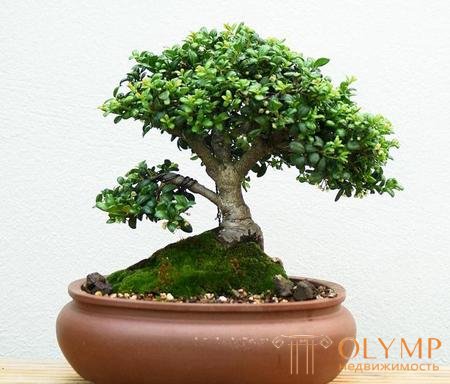
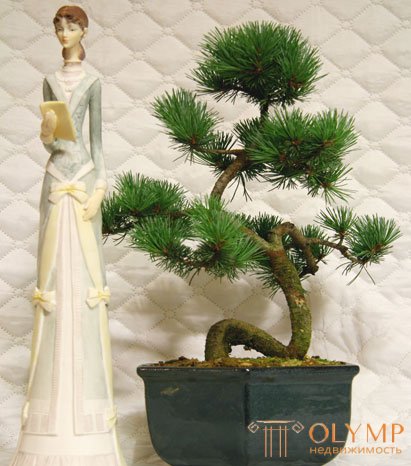
Fat woman
As a bonsai grown pale green (popularly called baobab) and Tetragona. Light mode: constantly lit south or west side. Temperature condition: optimum temperature - 6-20 C. Water mode: moderate watering. A plant can go without water for several weeks. Soil: a mixture of 1 - 2 parts of clay, humus and fine-grained gravel or stone powder (in extreme cases, coarse sand). Transplant: every 2-3 years (in the spring after flowering, when the buds are swollen). Nutritional mode: feeding from April to September. Reproduction: leaf cuttings (spring and summer). Formation. In order to give the bastard the desired shape, the top of the young plant is plucked at the required height, and the side shoots of the 2nd order are shortened by 1/3 of a leaf (to create a crown). Pruning leaves carried out no later than August, otherwise the plant will not bloom in winter. Once a year, in the spring after flowering, the plant is thinned to provide light access to the inner shoots.
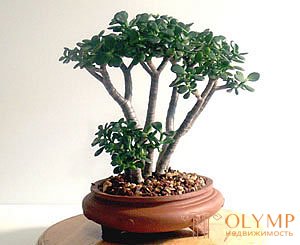
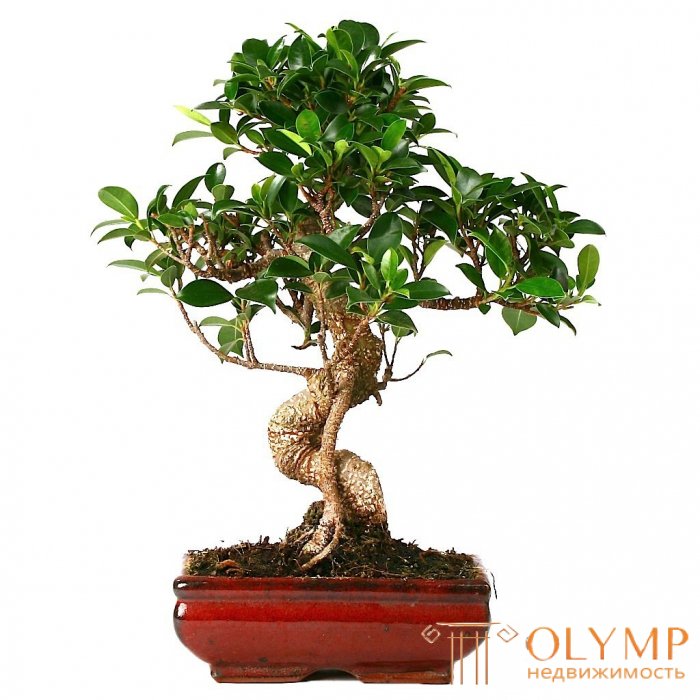
Scheffler.
As a bonsai they grow Schaffler radiant. Soil: a mixture of 2 - 3 parts of clay, 5 parts of humus and 2 parts of gravel. Transplant: every 2 years. Nutritional regime: feeding - all year round. Excess fertilizer is not allowed! Formation. The tree does not give a lush crown so it is recommended to plant 2-3 plants next to it. Recommended forms of bonsai: on stone and forest composition.
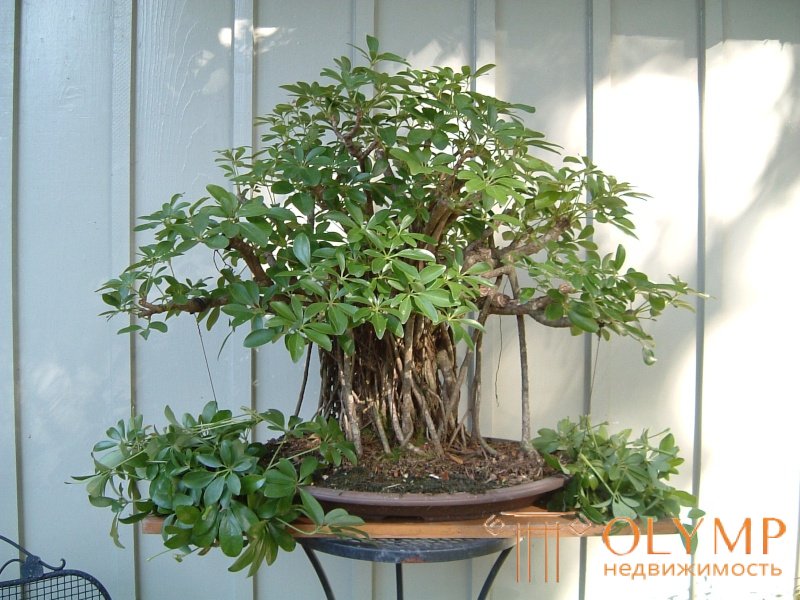
Что бы оставить комментарий войдите
Комментарии (0)